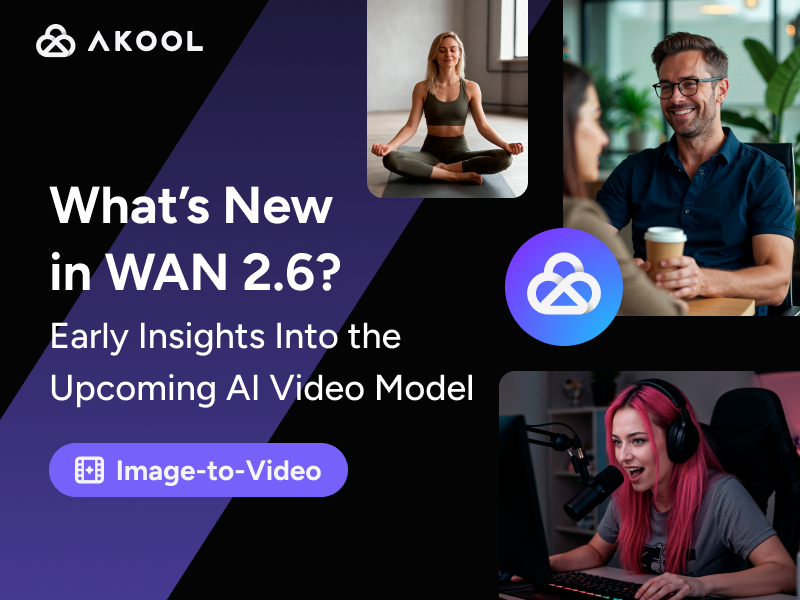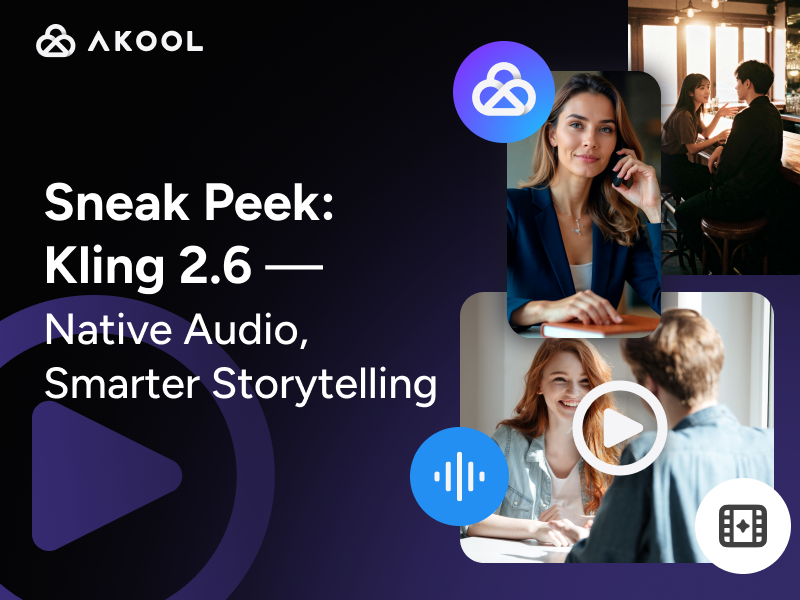Introduction to AI-Powered Learning Platforms
AI-powered learning platforms leverage artificial intelligence to personalize and enhance educational experiences. These platforms utilize algorithms to tailor content to individual learning styles, improve engagement, and optimize learning outcomes. Key capabilities include adaptive learning paths, real-time feedback, and predictive analytics. By analyzing user data, they provide creators and agencies with insights to refine content strategies, ensuring materials are both effective and engaging for diverse audiences.
How to Use AI-Powered Learning Platforms for Creative Growth
AI-powered learning platforms offer a multitude of tools and features that can significantly enhance the learning experience for creators and creative agencies. Here's a breakdown of how to effectively use these platforms:
Understanding AI-Powered Learning Platforms
- Definition: These platforms use artificial intelligence to personalize learning experiences by analyzing user data to adjust content delivery according to individual preferences and performance. To explore how these technologies can also be applied in HR, check out AI in Human Resources.
- Core Capabilities: Include adaptive learning paths, real-time feedback, and predictive analytics to optimize learning outcomes.
Steps to Utilize AI-Powered Learning Platforms
- Identify Learning Goals:
Clearly define what skills or knowledge areas you want to focus on. This will help the platform tailor recommendations that align with your objectives.
Choose the Right Platform:
Evaluate platforms based on your specific needs. Consider features like course variety, flexibility, and the type of AI integration each platform offers.
Set Up a Profile:
Enter relevant details about your learning preferences and background. This information helps the AI algorithms customize your learning path.
Engage with Personalized Content:
Use the platform’s recommended courses or materials, which are tailored to your learning style and pace. This ensures a more engaging and effective learning experience.
Utilize Real-Time Feedback:
Take advantage of immediate feedback features to understand your strengths and areas for improvement. Adjust your study strategies based on this feedback.
Monitor Progress with Analytics:
Regularly review performance analytics provided by the platform to track your progress and adjust your learning path if necessary.
Iterate and Adapt:
- Use insights gained from predictive analytics to adapt your learning approach, ensuring continuous improvement and effectiveness. For HR professionals, leveraging Predictive HR Analytics can be particularly beneficial.
Useful Formulas and Tools
- Adaptive Algorithms: These adjust content difficulty and pacing based on your progress, ensuring that the learning curve is neither too steep nor too shallow.
- Predictive Models: Use historical learning data to forecast potential outcomes and suggest personalized interventions.
By strategically utilizing these features, creators and agencies can maximize the benefits of AI-powered learning platforms, leading to enhanced skills, improved content creation, and more effective training programs. For examples of effective training materials, refer to Training Videos for Employees.
Applications of AI-Powered Learning Platforms
AI-powered learning platforms are revolutionizing creative industries by offering personalized and efficient learning experiences. Here are some key applications:
| Application | Platform | Description |
|---|---|---|
| Skill Development | Coursera, Udemy | AI tailors course recommendations based on user behavior and preferences. |
| Content Creation | Articulate 360 | Utilizes AI to generate interactive and engaging e-learning content. |
| Performance Analytics | Edmodo | Provides insights into learner performance, enabling refinement of training programs. |
| Adaptive Learning Paths | Knewton | Offers experiences that adjust difficulty based on user progress. |
These applications highlight the transformative impact of AI in enhancing educational experiences and creative productivity.
Technical Insights on AI-Powered Learning Platforms
Machine Learning Algorithms
AI-powered learning platforms use machine learning algorithms to tailor educational content. These algorithms analyze user interactions, identify patterns, and adjust materials in real-time, ensuring content aligns with individual learning paces and styles. For more insights on AI's role in HR, explore AI for HR.
Adaptive Learning Paths
These platforms employ adaptive learning technology to create dynamic learning paths. By assessing a learner's progress and understanding, the system modifies the curriculum's difficulty and sequence, enhancing the learning journey's efficiency and effectiveness.
Real-Time Feedback Mechanisms
AI integrates real-time feedback systems, offering immediate analysis of learner performance. This technology identifies knowledge gaps promptly, allowing learners to address misunderstandings swiftly and educators to adjust instructional strategies accordingly.
Predictive Analytics
Predictive analytics is a core feature, leveraging historical data to forecast learning outcomes. This involves complex data modeling to predict future performance trends, enabling proactive adjustments to educational approaches for more favorable results.
Data Analytics and Insights
AI-driven platforms provide robust analytics tools that compile and analyze large datasets. These insights help educators and content creators refine educational materials, ensuring they meet diverse learner needs and optimize educational outcomes. This continuous feedback loop enhances the overall learning experience.
Statistics on AI-Powered Learning Platforms
AI-powered learning platforms are becoming increasingly integral in the educational landscape, providing personalized, efficient, and scalable learning experiences. Here are some key statistics that highlight their impact and growth:
| Statistic | Explanation |
|---|---|
| Market Growth | The global AI in education market size was valued at approximately USD 3.68 billion in 2021 and is projected to reach USD 20.65 billion by 2028, growing at a CAGR of 33.2% during the forecast period (Fortune Business Insights). This rapid growth underscores the increasing adoption of AI technologies in educational settings. |
| Personalization Impact | According to a recent study, AI-driven personalization in learning platforms can enhance student engagement by up to 40% and improve learning outcomes by 30% (McKinsey & Company). Personalization is a critical feature of AI-powered platforms, allowing for tailored learning experiences that cater to individual student needs. |
| Efficiency and Cost Reduction | Incorporating AI in educational platforms can reduce administrative time by up to 50% and lower operational costs by 20% (Deloitte). Efficiency gains are a major advantage of AI technologies. By automating routine tasks and streamlining processes, AI-powered platforms can save time and resources. |
These statistics indicate not only the growing importance of AI in education but also highlight the specific areas where it is making a substantial impact. For creators and developers, understanding these trends can guide the development of innovative solutions that meet the evolving needs of the educational landscape.
Frequently Asked Questions about AI-Powered Learning Platforms
What are AI-powered learning platforms?
AI-powered learning platforms are educational tools that leverage artificial intelligence to personalize learning experiences, enhance student engagement, and optimize educational outcomes. These platforms use machine learning algorithms to adapt to individual learning styles and provide tailored content.
How do AI-driven educational platforms improve learning outcomes?
AI-driven educational platforms improve learning outcomes by analyzing student data to identify strengths and weaknesses. They offer personalized learning paths, adaptive assessments, and real-time feedback, allowing students to focus on areas needing improvement and advance at their own pace.
What features should I look for in an AI-based learning management system?
When evaluating an AI-based learning management system, look for features such as adaptive learning capabilities, data analytics, personalized content recommendations, interactive learning tools, and integration with other educational technologies.
How does AI personalize learning experiences?
AI personalizes learning experiences by analyzing data on student performance, preferences, and behavior. It then uses this information to customize content delivery, suggest resources, and adjust difficulty levels to match the learner's needs, ensuring a more effective and engaging educational experience.
Can AI-powered education platforms be used for corporate training?
Yes, AI-powered education platforms can be highly effective for corporate training. They offer personalized learning paths, track employee progress, and provide insights into skill gaps, helping organizations tailor training programs to meet specific business needs and improve workforce development. For additional resources, consider using AI Corporate Training Videos.
What are the benefits of using AI in online learning platforms?
The benefits of using AI in online learning platforms include enhanced personalization, improved engagement, efficient content delivery, real-time performance tracking, and scalability. AI also helps educators identify at-risk students and provides insights for curriculum improvement.
Are AI-based learning platforms suitable for all age groups?
AI-based learning platforms can be tailored to suit all age groups, from early childhood education to adult learning. Their adaptability allows them to cater to diverse learning needs and preferences, making them suitable for K-12, higher education, and professional development.
How do AI tools in education support teachers and educators?
AI tools in education support teachers and educators by automating administrative tasks, providing data-driven insights into student performance, and offering resources for differentiated instruction. This allows educators to focus more on teaching and less on paperwork, enhancing the overall learning environment. For more on AI's role in education, visit AI Training Videos.




